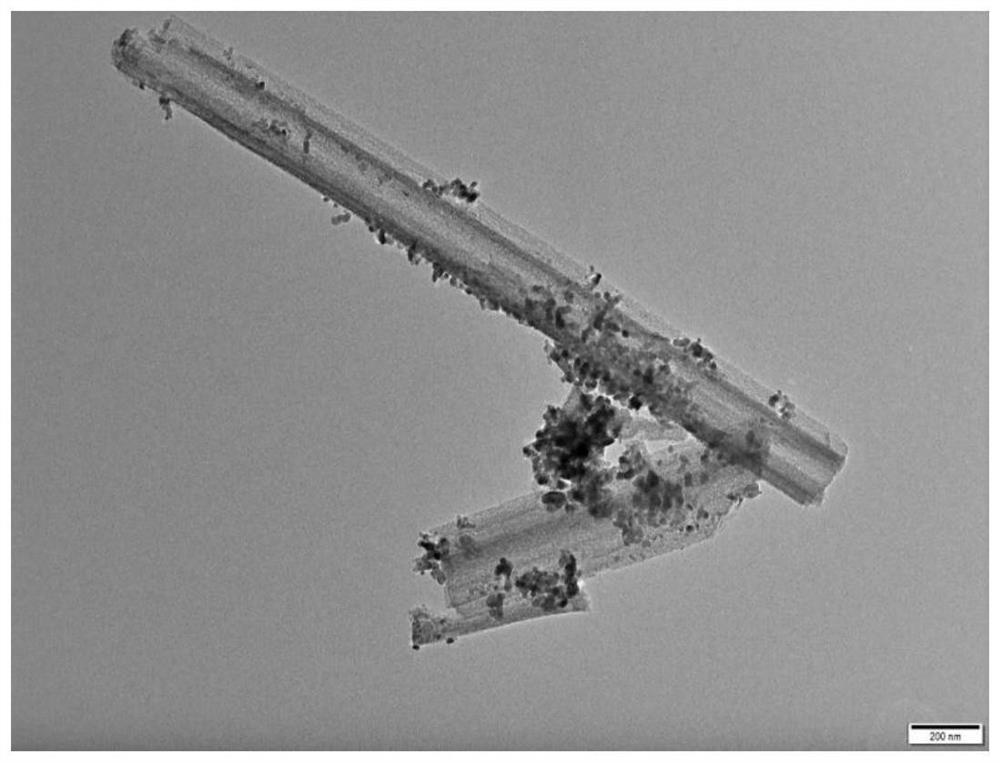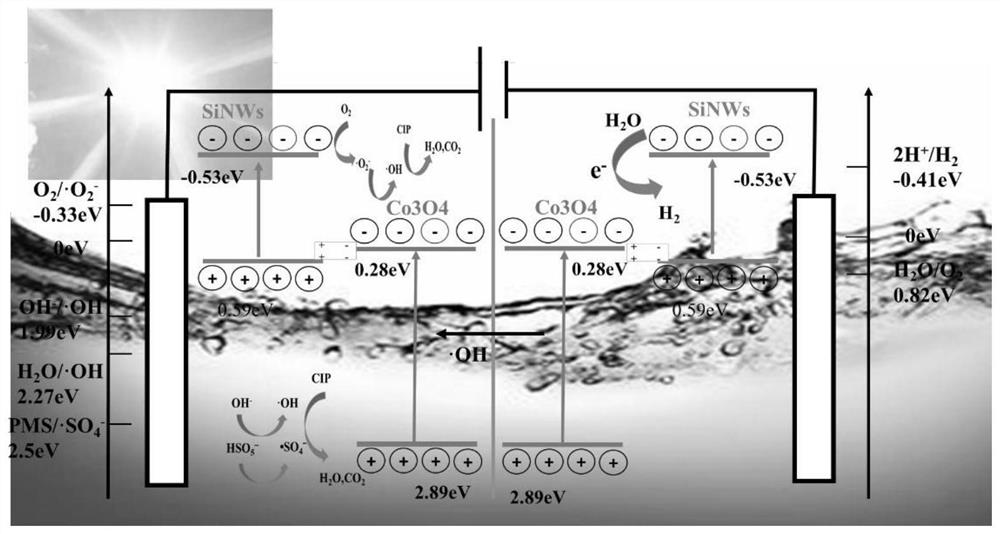Method for synchronously degrading pollutants in water through photoelectrocatalytic hydrogen evolution
A technology of photoelectric catalysis and pollutants, which is applied in the direction of water pollutants, chemical instruments and methods, light water/sewage treatment, etc., can solve the problems of difficult recycling and secondary pollution of water, and achieve easy recycling, promotion of separation, and avoidance of secondary pollution. The effect of secondary pollution
- Summary
- Abstract
- Description
- Claims
- Application Information
AI Technical Summary
Problems solved by technology
Method used
Image
Examples
Embodiment 1
[0033] Silicon nanowire arrays prepared by metal-assisted chemical wet etching, and then loaded Co on the silicon nanoarrays by spin coating and air calcination 3 o 4 nanoparticles. Then, the H-type electrolyzer was used as the reaction device, and the n-SiNWs / Co 3 o 4 The electrode is a photoanode, p-SiNWs / Co 3 o 4The electrode is a photocathode, the Ag / AgCl electrode is a reference electrode, and a xenon light source is used to irradiate the cathode and anode to form a photoelectrochemical catalytic reactor. Under the action of electric field and light source, photocatalytic hydrogen evolution and degradation of pollutants in water are realized simultaneously.
[0034] SiNWs / Co used in the described processing method 3 o 4 The electrode preparation mainly adopts the metal-assisted chemical etching method to prepare the silicon nanowire array, and the Co(NO 3 ) 2 ·6H 2 O ethanol solution was loaded on the surface of silicon nanowire arrays and calcined in air.
[0...
PUM
| Property | Measurement | Unit |
|---|---|---|
| thickness | aaaaa | aaaaa |
| electrical resistivity | aaaaa | aaaaa |
| crystal orientation | aaaaa | aaaaa |
Abstract
Description
Claims
Application Information
 Login to View More
Login to View More - R&D
- Intellectual Property
- Life Sciences
- Materials
- Tech Scout
- Unparalleled Data Quality
- Higher Quality Content
- 60% Fewer Hallucinations
Browse by: Latest US Patents, China's latest patents, Technical Efficacy Thesaurus, Application Domain, Technology Topic, Popular Technical Reports.
© 2025 PatSnap. All rights reserved.Legal|Privacy policy|Modern Slavery Act Transparency Statement|Sitemap|About US| Contact US: help@patsnap.com



